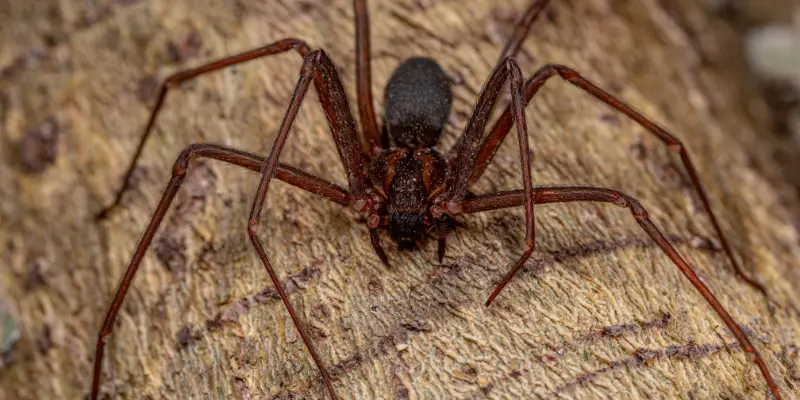
Louisiana is home to different types of spiders. The warm climate and diverse landscapes, which include forests and wetlands, create a perfect living space for various spider species.
With a wide range of spider species residing in Louisiana, how can you know which ones are harmless and which ones could be potentially dangerous?
In this guide, you’ll learn how to identify common species of spiders in Louisiana. Also, you’ll know how to prevent infestations and what steps you can take to remove them from your home.
Common Spiders in Louisiana
There are about 3,000 species of spiders throughout North America. Spiders help control insect populations. For example, these arachnids commonly eat mosquitos. This relationship helps control mosquito populations.
Here are the most common spiders in Louisiana:
Brown Recluse
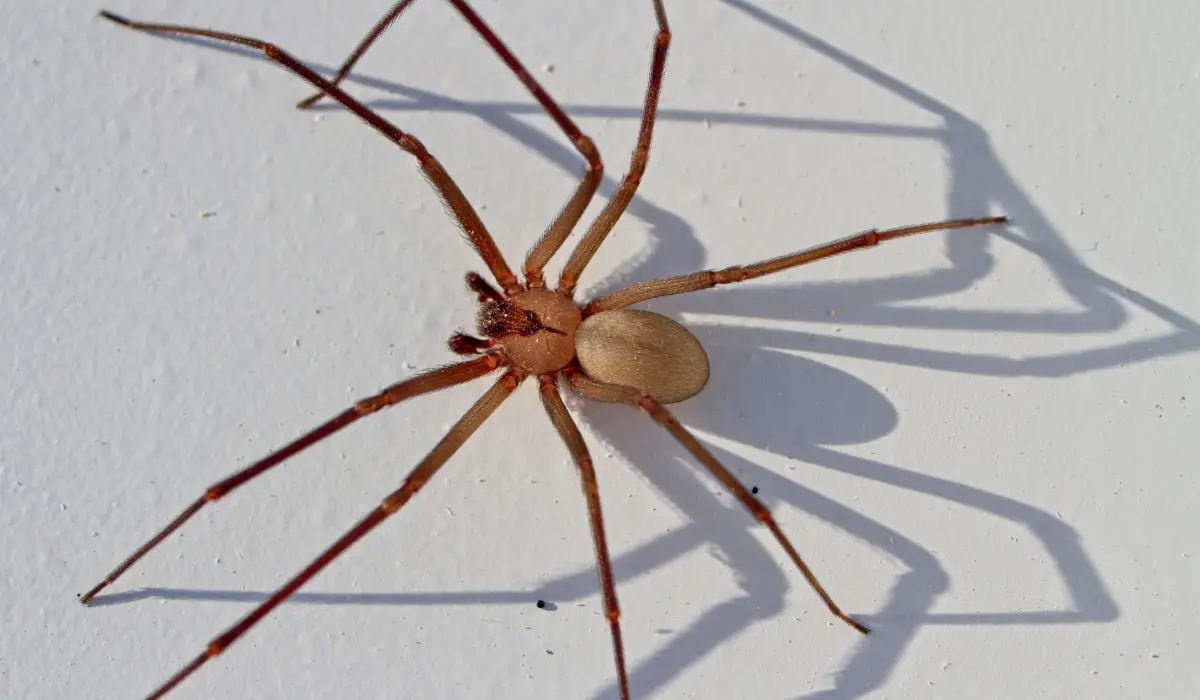
The Brown Recluse, commonly known as the “fiddle-back” or “violin spider,” is identifiable by its distinctive violin-shaped marking. This spider favors dark, quiet spaces like storage rooms and attics.
Typically brown, with a body length of 0.24-0.79 inches, Brown Recluses are nocturnal and construct irregular webs in concealed areas. They possess necrotic venom and their bites sometimes require medical attention.
| Size (Average): | 0.24-0.79 inches |
| Color: | Yellowish-brown |
| Habitat: | Dark, secluded spaces indoors and outdoors |
Black Widow
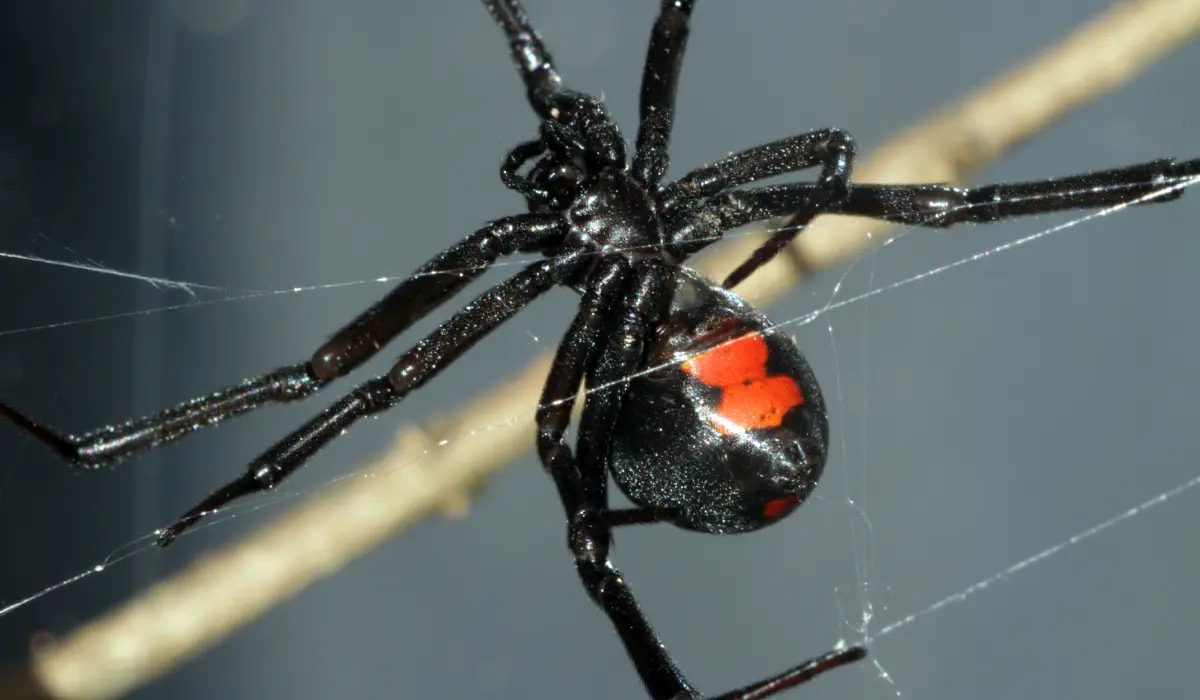
The Black Widow stands out with its glossy black body and distinctive red hourglass marking on the abdomen’s underside. These spiders are about 0.12-0.51 inches and favor concealed spaces like woodpiles and sheds.
Infamous for their venom, Black Widows build irregular webs and exhibit reclusive behavior. While bites are uncommon, they can cause severe symptoms, necessitating prompt medical attention.
| Size (Average): | 0.12-0.51 inches |
| Color: | Shiny black |
| Habitat: | Undisturbed, cluttered areas indoors and outdoors |
Brown Widow
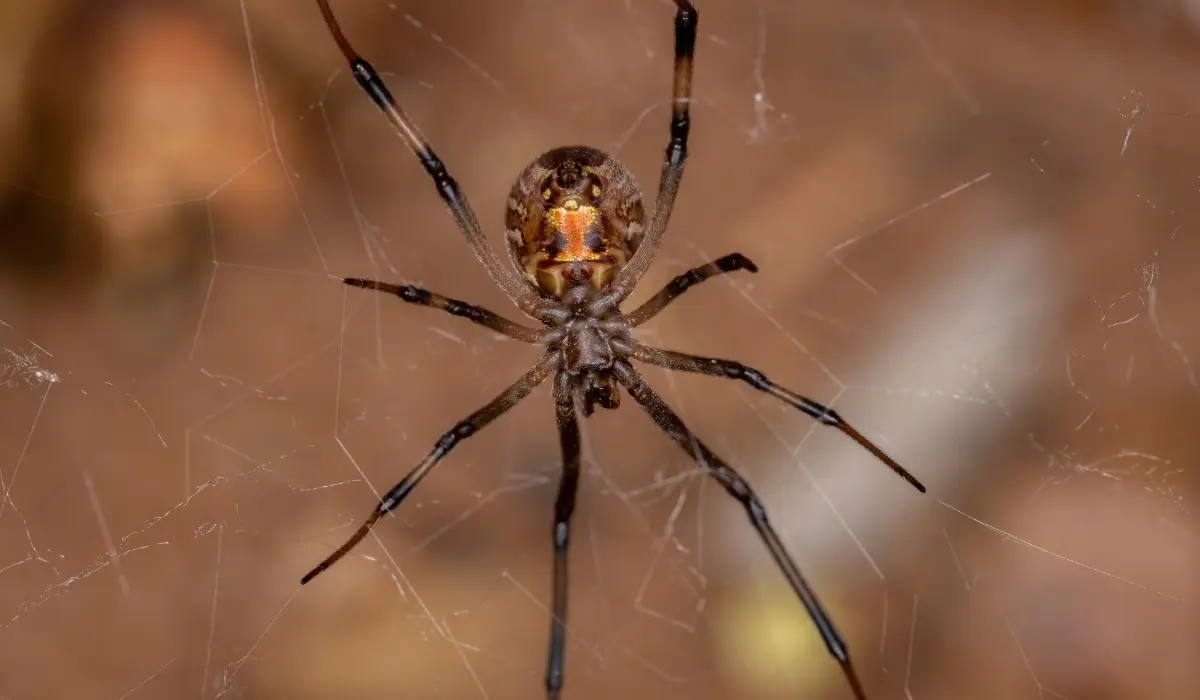
A close relative of the Black Widow, the Brown Widow is characterized by its tan-colored body and distinctive orange hourglass marking on the abdomen. It thrives in various environments, including outdoor structures and gardens.
The Brown Widow is about 0.5-1.5 inches and its bites are generally less harmful than Black Widows. They exhibit reclusive behavior and construct irregular webs for prey capture.
| Size (Average): | 0.5-1.5 inches |
| Color: | Tan-colored/brownish with color markings |
| Habitat: | Outdoor structures and gardens |
Cellar Spiders
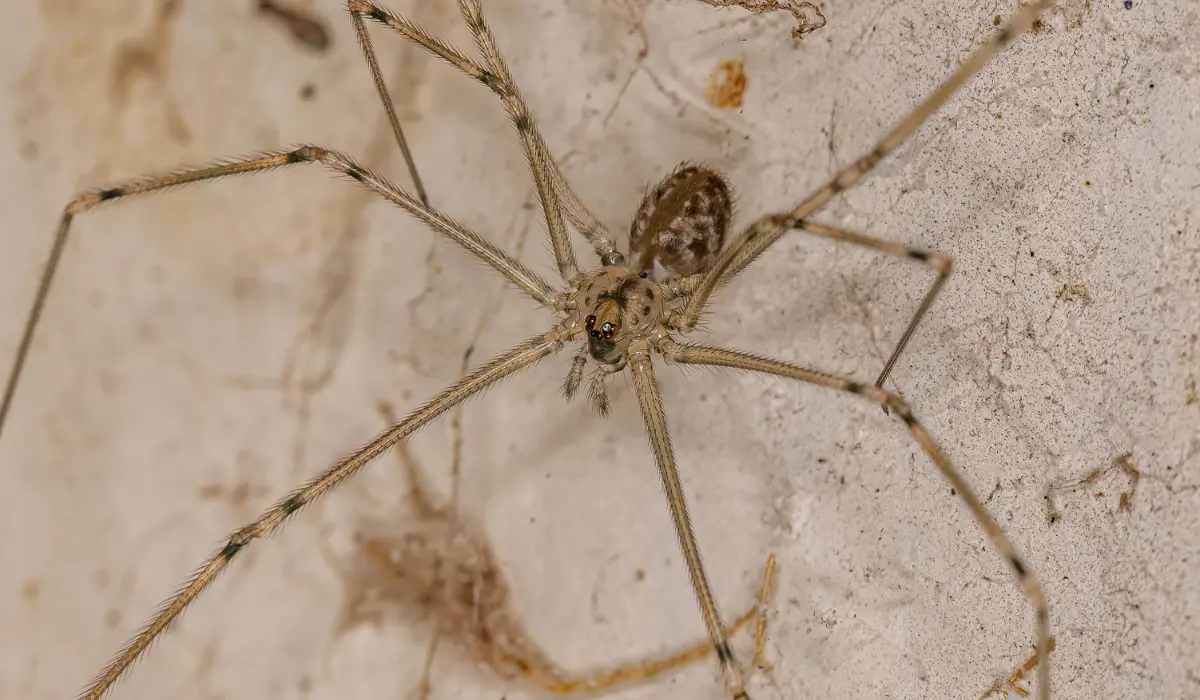
Known as “daddy longlegs,” Cellar Spiders are easily recognizable by their slender, elongated legs. Their size average is 0.24-0.47 inches, and they prefer damp environments commonly found in areas like basements and cellars.
While venomous, their bites are harmless to humans, and they are not known to be aggressive. Cellar Spiders construct irregular webs for shelter and catching small insects, contributing to natural pest control.
| Size (Average): | 0.24-0.47 inches |
| Color: | Pale yellow to light brown |
| Habitat: | Damp and dark places like basements and cellars |
Cobweb Spiders
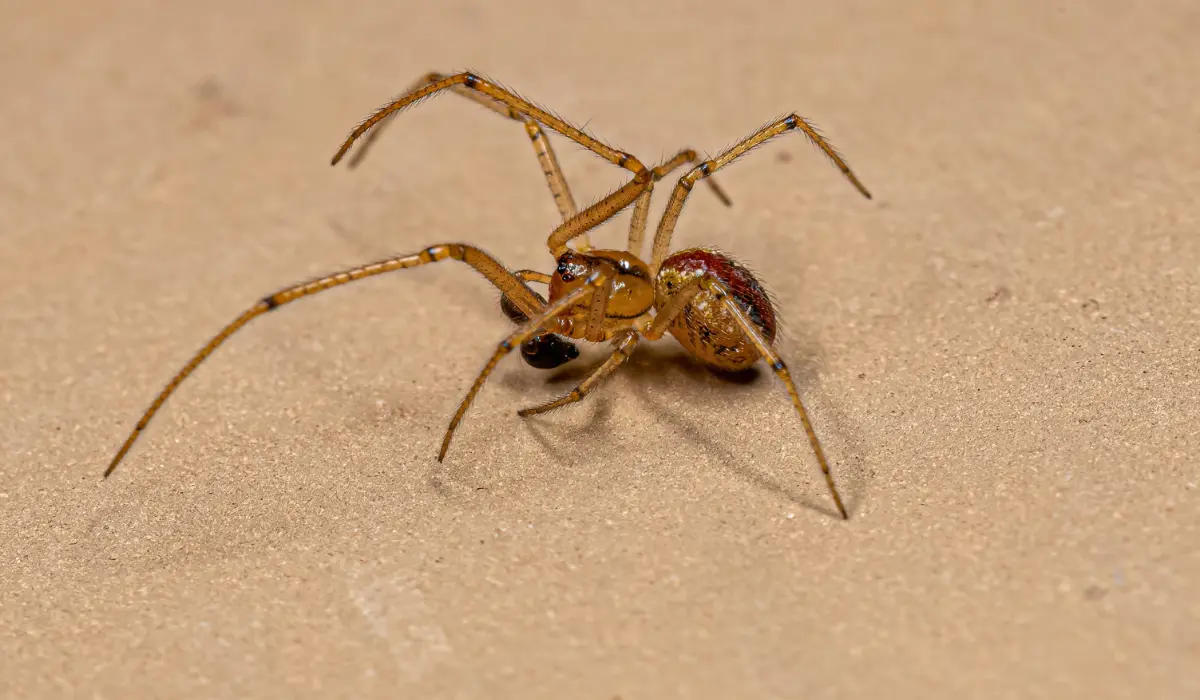
Cobweb Spiders average 0.2-0.3 inches in size and are recognized for creating messy, irregular webs typically found in corners and near windows indoors.
One notable species is the Parasteatoda tepidariorum, known as the common house spider or American house spider. These spiders are venomous but pose little threat to humans, and bites are rare.
| Size (Average): | 0.2-0.3 inches |
| Color: | Brown, gray, tan |
| Habitat: | Corners of rooms, windows, and garages |
Fishing Spiders
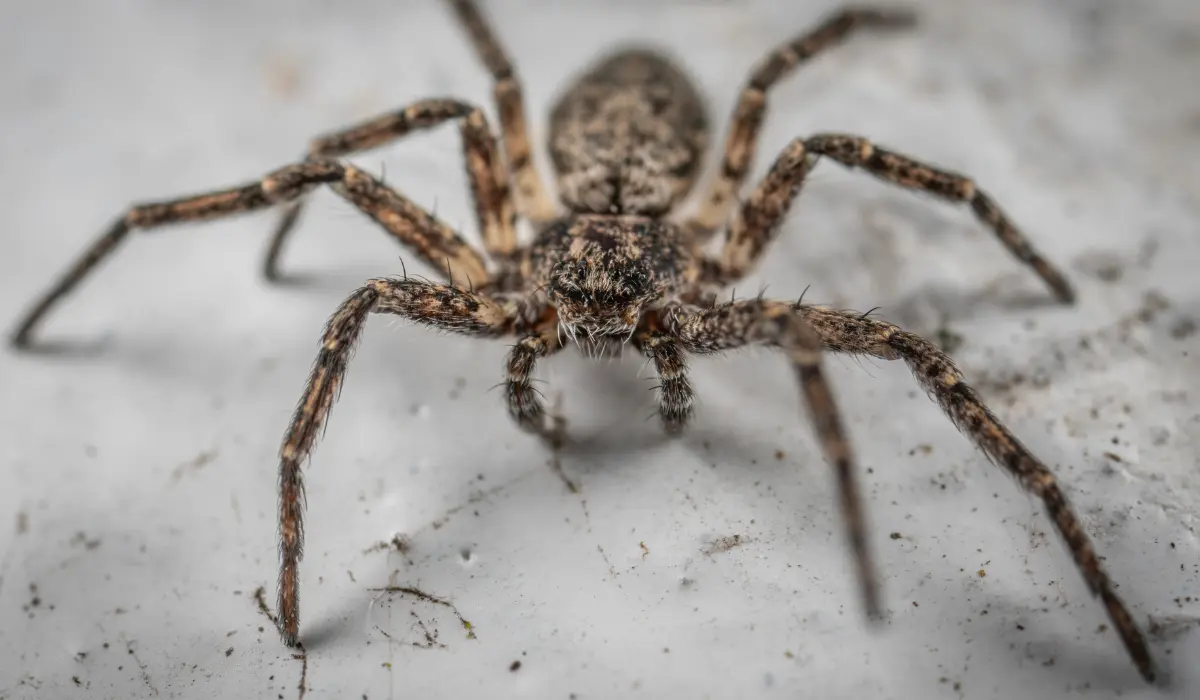
Also known as Dolomedes, Fishing Spiders are characterized by a robust build and long front legs, adapted for their aquatic lifestyle. These spiders average 0.3-1.0 inches in size and excel at walking on water surfaces. They are commonly found near ponds, streams, and wetlands.
Using a sit-and-wait approach, they detect prey through vibrations in the water and swiftly capture insects, small fish, or tadpoles. While venomous, Fishing Spider bites are not harmful to humans.
| Size (Average): | 0.3-1.0 inches |
| Color: | Brown, gray |
| Habitat: | Near water bodies, also in forests and fields |
Wolf Spiders
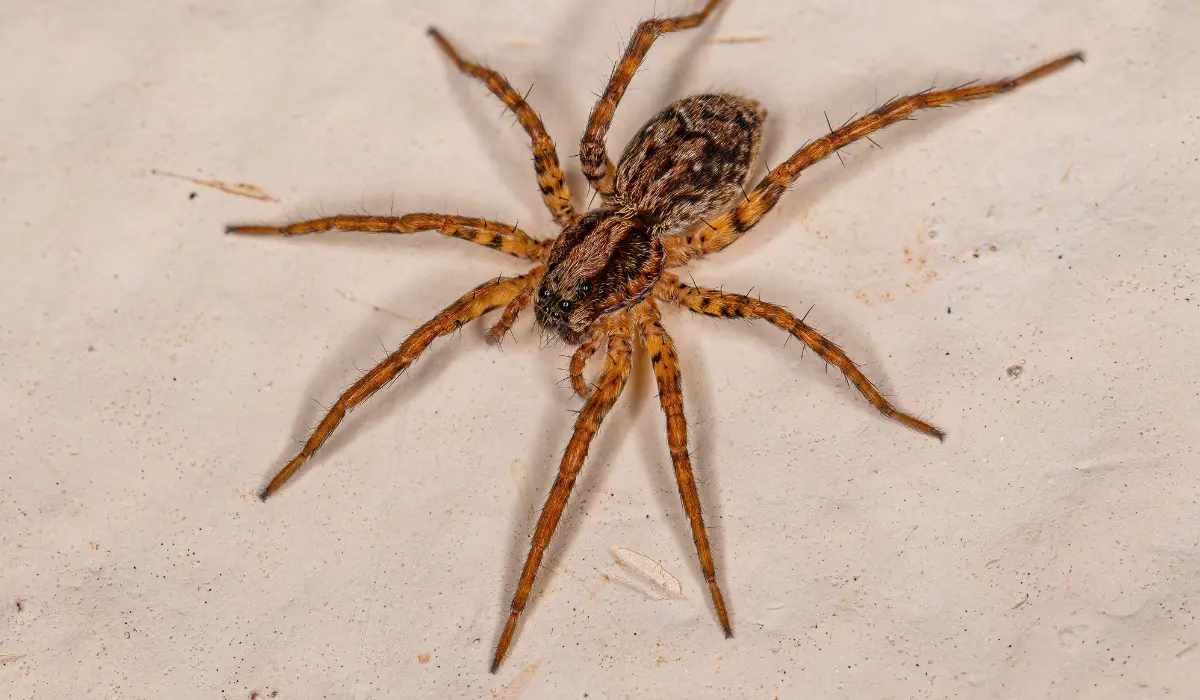
Wolf spiders are characterized by their robust build and agility. They have exceptional vision but don’t show web-spinning behavior. Instead, they actively chase down prey in various habitats. Their average size is 0.4-1.4 inches.
Wolf spiders are ground-dwelling hunters, and while venomous, their bites are generally not harmful to humans.
| Size (Average): | 0.4-1.4 inches |
| Color: | Brown, grey, black |
| Habitat: | On the ground in various environments |
Jumping Spiders
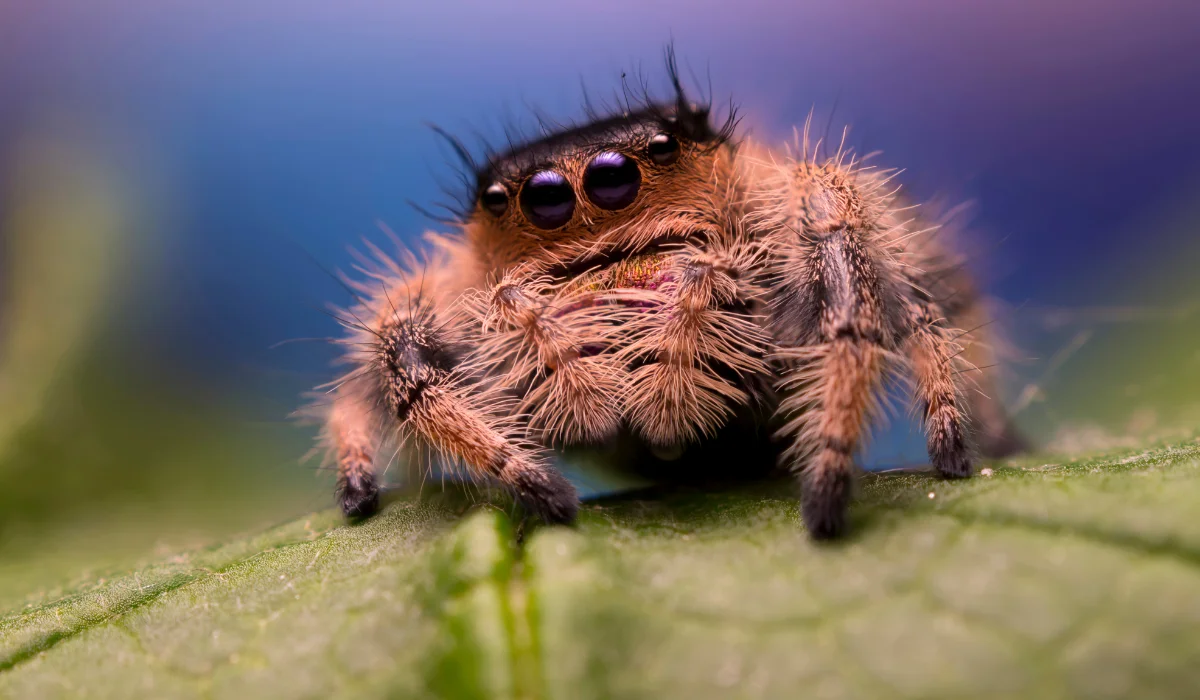
Jumping spiders exhibit exceptional vision and impressive jumping abilities. They average 0.04-0.98 inches and have a compact build. Their vivid coloration sets them apart.
Jumping spiders are common in sunny areas with plants and on building walls. They possess venom but their bites are typically harmless to humans.
| Size (Average): | 0.04-0.98 inches |
| Color: | Various |
| Habitat: | Sunny areas with plants, also on building walls |
Orb-Weavers
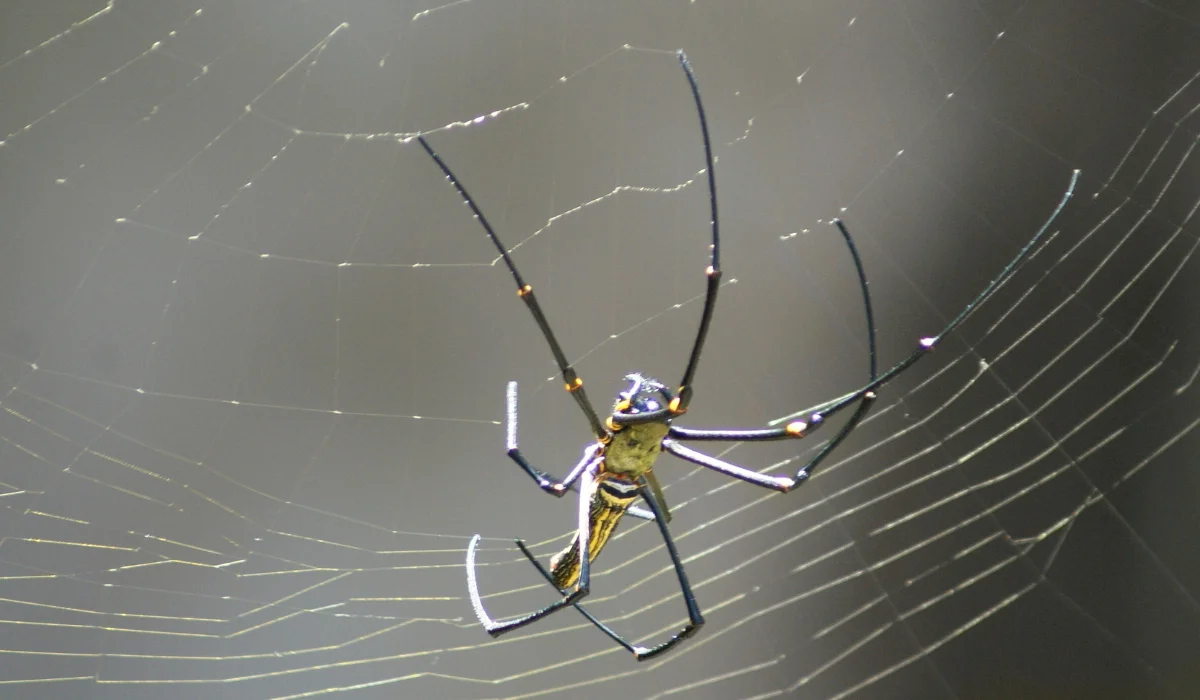
Orb-weavers average 0.2-1.0 inches in size and are a diverse group found in gardens and forested areas. These spiders are known for their intricate wheel-shaped webs used to capture flying insects.
Types of Orb-Weavers:
- Spotted Orb-Weaver: Known for distinctive markings.
- Black and Yellow Garden Spider (Argiope aurantia): Vibrant colors and unique web pattern.
- Leucauge venusta (Orchard Spider): Intricate web and colorful appearance.
- Nephila clavipes (Golden Silk Orb-Weaver or Banana Spider): Large size and golden silk threads.
- Neoscona: Represents a diverse group within the orb-weaver family.
| Size (Average): | 0.2-1.0 inches |
| Color: | Various |
| Habitat: | Gardens, fields, forests, and windows |
Southern House

The Southern House Spider is distinguished by its dark coloration and robust build. Males are around 0.6 inches, while females average 0.8-2.0 inches in size.
These spiders prefer warm and humid environments and often reside in sheltered areas around human structures. They adapt well to urban habitats and construct funnel-shaped webs.
While venomous, their bites are generally harmless to humans, causing mild irritation at most.
| Size (Average): | Males 0.6 inches, Females 0.8-2.0 inches |
| Color: | Brown |
| Habitat: | Warm, humid, and undisturbed parts of buildings |
Sac spider
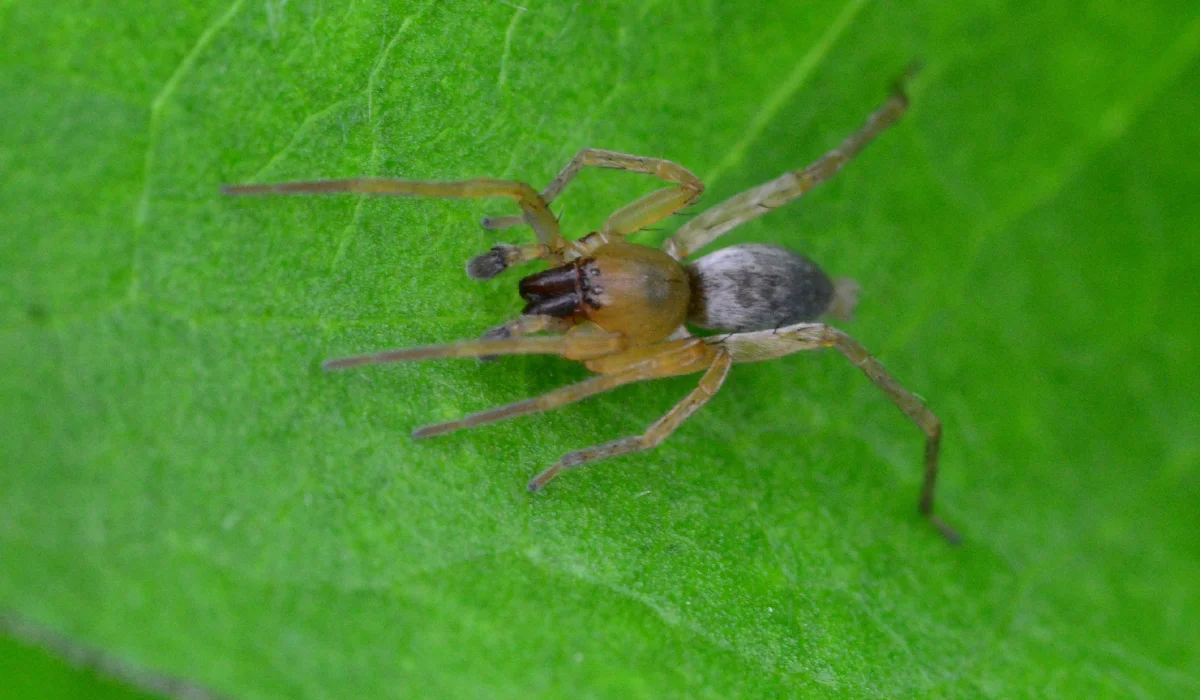
The Sac Spider is a small species and averages 0.2-0.4 inches. With pale coloration and distinctive tubular sac retreats, these spiders are adaptable to various environments, including gardens and structures.
Sac spider retreats serve as both shelter and hunting grounds. Though this spider has venom, its bite is typically not harmful to humans and usually results in only minor irritation.
| Size (Average): | 0.2-0.4 inches |
| Color: | Pale green, yellow, beige |
| Habitat: | Indoor and outdoor, under leaves and on walls |
What Spiders in Louisiana Are Dangerous?
While most spiders in Louisiana are harmless, a few species, such as the brown recluse and the black widow, are venomous spiders and can deliver spider bites that may cause mild to moderate reactions in some individuals.
- Black Widow Spider (Latrodectus mactans): Also called Southern Black Widow spiders, females possess venom that can cause pain, muscle cramps, nausea, and fever. While fatalities are rare, severe symptoms warrant immediate medical attention.
- Brown Recluse Spider (Loxosceles reclusa): Bites may lead to local tissue damage and, rarely, systemic symptoms. Seeking medical attention is advised for those bitten by a Brown Recluse Spider.
Preventing Spiders in Your Louisiana Home
To prevent spiders from entering your home, pay attention to their habitats and manage the insects they feed on. If spiders pose an immediate threat, contact pest control services in your area.
Spider Prevention Tips:
| Seal Up Entry Points | Inspect for cracks and crevices.Use caulk to seal gaps around windows, doors, and foundations.Ensure intact screens on windows and doors. |
| Reduce Insect Populations | Keep outdoor lights off or use yellow “bug” lights.Regularly clean up food crumbs and spills to deter insects. |
| Eliminate Clutter | Remove stacks of newspapers, boxes, or clothing from the floor.Reduce potential spider habitats. |
| Frequent Cleaning | Vacuum or dust corners and crevices routinely.Disrupt spider webs and egg sacs. |
| Maintain the Yard | Trim bushes and trees away from the home.Manage mulch levels to minimize ideal spider retreats. |
–
Get $15 Off Your Spider Service Today!
–
By adopting these measures, you can effectively discourage most spider species from making a home within your Louisiana residence. If concerns about poisonous spiders arise, consult a professional for identification and control advice.
How to Get Rid of Spiders in Louisiana
You can tackle dangerous spiders effectively by targeting their food sources. Spiders do well in places where there are lots of insects for them to eat. You can take a proactive step by maintaining a clean and clutter-free home.
Natural Repellents
- Essential Oils: Use oils like peppermint, tea tree, or lavender as natural deterrents.
- Vinegar Solution: A mixture of white vinegar and water can be used as a spray to deter spiders.
Chemical Solutions
- Insecticides: Use spider-specific insecticides carefully, following the product’s instructions.
- Pest Control Service: Consider hiring a professional pest control service for persistent issues, especially since DIY pest control dangers are real.
Remember, while spiders can be pests, they also play an essential role in controlling insect populations. Use methods that target the specific spider species in your home without broadly impacting the local ecosystem.
Pest Control Professionals in Louisiana
Remember, when infestations are severe or persistent, calling a professional pest control expert in Louisiana is the best way to tackle your pest problem fast.
If you have a persistent spider problem and are in need of help, give us a call at (+1)985-859-7378 or book a service now to secure fast and effective pest control services.